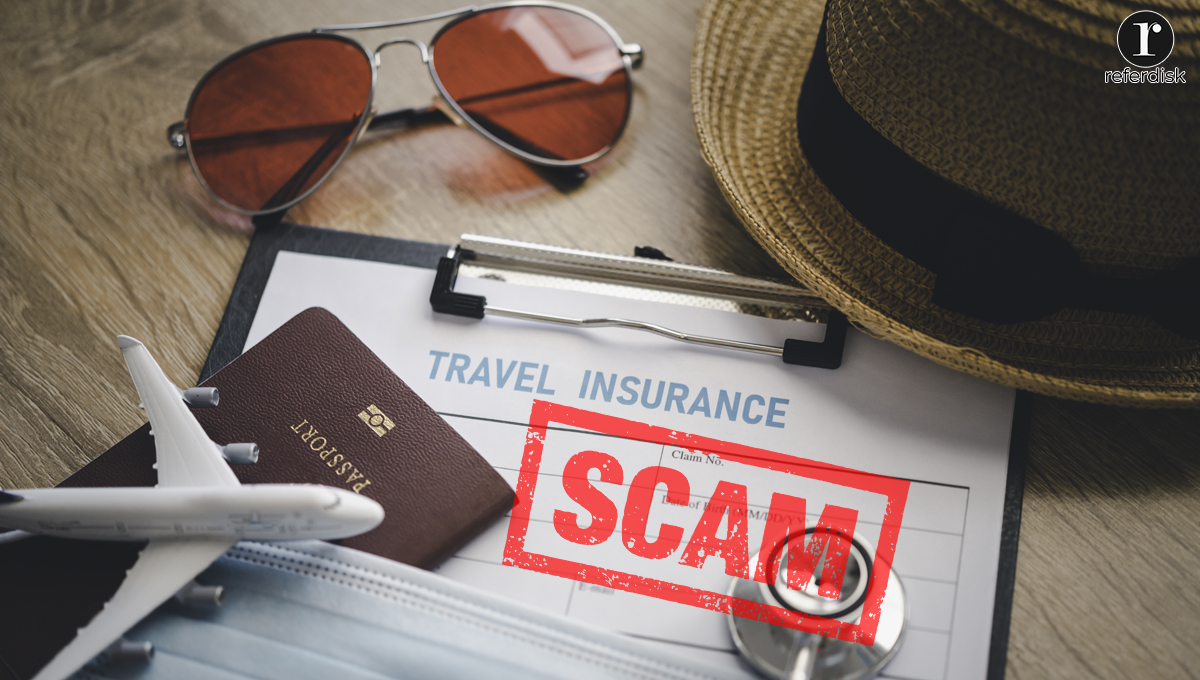
Scam Alert! Don't Let an Insurance Scam Ruin Your Trip
Traveling should be a joyful adventure, not a crash course in fraud prevention. But with the rise in digital deception, insurance scam are becoming a growing concern especially for senior travelers who value safety, security and peace of mind. Just like AARP emphasizes smart, informed decision-making, this blog aims to keep you protected and prepared while exploring the world.
Whether you’re backpacking through Europe or cruising along the coast, a solid travel insurance plan is your ticket to confidence. But here’s the catch: scammers have learned how to mimic legitimate providers, steal credit card information and disappear before you even unpack your bags. These insurance scams don’t just affect the naive or uninformed they’re cleverly disguised and highly targeted, making even seasoned travelers vulnerable.
Insurance Frauds Examples Every Traveler Should Know
Scammers are evolving and so should your awareness. Here are a few insurance frauds examples travelers need to watch for:
- Fake Travel Agencies: These often lure travelers with too-good-to-be-true deals bundled with so-called "free" protection insurance. Once the payment is made, they vanish without a trace, leaving you stranded and without coverage.
- Bogus Medical Emergencies: In regions with loose regulations, scammers may pose as doctors or hospital staff, pressuring travelers into using fake travel health insurance documents. These fake claims may be used to overcharge for services or steal insurance credentials.
- Phishing Emails & Texts: Fraudsters send what look like legitimate business text messaging alerts from an insurer, asking you to confirm personal data or make an "urgent" payment". Clicking those links could expose your personal and financial information.
By learning from these examples, you’ll be less likely to fall into traps designed to exploit your trust and finances. Awareness is your first layer of travel protection.
Live Tracker Number Tricks
One sneaky method scammers use is the fake number. This trick appears as a tool to follow up on your travel insurance claim, but it's actually a ploy to collect sensitive information. These numbers or links are often disguised as a convenience, but clicking on them could lead to malware installations or phishing attacks. Always verify tracker links through the official insurer’s website or phone line. Never trust unfamiliar URLs or numbers sent via SMS or email, no matter how convincing they may seem.
How to Protect Yourself While Traveling
AARP encourages smart planning and that includes protecting yourself from financial pitfalls on the road. Here are some key tips to keep your trip scam-free:
- Stick to Reputable Insurers: Only buy an insurance plan from verified sources or brands recommended by platforms like AARP. Look for clear documentation, customer support numbers and a robust digital presence.
- Use Strong Payment Methods: Avoid wire transfers or payment methods that lack consumer protection. Credit cards offer more fraud protection and are easier to dispute if needed.
- Watch for Red Flags: Deals that are way cheaper than competitors, excessive urgency or a lack of proper documentation are signs of an insurance scam. Always take time to do a quick background check.
- Avoid Oversharing Online: Posting your entire itinerary, hotel bookings or flight details on public platforms could give scammers insights into your whereabouts, making you a prime target.
|
Warning Sign |
Why It's Suspicious |
What You Should Do |
|
Too-good-to-be-true prices |
Common bait to lure victims |
Compare with average industry rates |
|
Unverified contact numbers |
Often lead to scam call centers |
Search official channels |
|
Requests for sensitive info via SMS |
Phishing method using business text messaging |
Contact insurer directly |
|
No reviews or online presence |
New or fake companies often lack history |
Stick to brands with good reviews |
|
Fake live number links |
Can lead to malware or data theft |
Never click suspicious links |
The Role of Travel Protection Insurance
Travel insurance offers a safety net but only when it's the real deal. AARP recommends understanding exactly what your policy includes. Does it cover trip cancellations, medical emergencies or lost luggage? If your travel health insurance comes bundled with your travel credit card, verify the details. Some of the best travel credit card offers include this coverage as a bonus, but not all are comprehensive. Don’t assume every travel insurance plan is the same. Read the fine print, ask for clarification and consult your credit card provider for any included travel perks.
Travel Smarter with AARP
Here’s the brilliant rule from AARP: "Plan wisely, travel certainly". Staying vigilant against an insurance scam isn’t approximately paranoia it’s almost empowerment. By understanding how scammers work, checking your travel protection insurance provider's authenticity and shielding your credit card data, you can appreciate the travel benefits you deserve. Your journey should be about the joy of discovering new places, not the fear of financial fraud. With helpful resources from trusted sites like AARP and smart steps outlined here, you can travel safer and smarter. And remember protection doesn’t stop at purchasing a policy, it involves staying alert every step of the way. In the end, the best travel memories are made when you're not worrying about what could go wrong. Say yes to adventure, but keep your guard up and your wallet closed to crooks. For more resources and travel security guides, visit AARP.